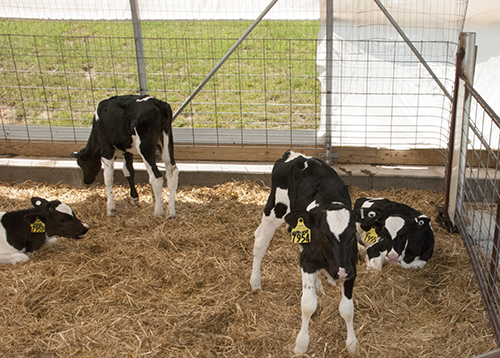
When automated calf feeders came onto the scene, some farms jumped in head first. While many are using this new technology with great success, there has certainly been some trial and error in the industry as we try to figure out the best way to raise our baby calves on these automated feeders.
To get a handle on some best management practices, the University of Minnesota is in the midst of conducting a field study on 38 farms in the Midwest using this technology. Marcia Endres with the University of Minnesota shared some preliminary data from this research during her presentation at the Precision Dairy Conference held in Rochester, Minn.
On average, the participating farms have 18 calves per pen, 50 square feet of pen space per calf and peak milk intake of 8 liters per day. During each visit to the farm, the researchers scored calf health, collected blood samples and took body temperatures.
According to Endres, their early analysis found the following factors to be associated with abnormal health scores:
- Number of calves per group - The greater number of calves, the more sick calves.
- Number of feeding stations - The greater number of calves per station, the more sick calves.
- Space per calf - Less space per calf was associated with a higher number of abnormal scores.
- Time to reach peak milk allowance - Sooner was better in terms of calf health.
- Air speed in resting and feeding areas - Faster air movement in the resting area was associated with elevated nasal scores, an indicator of respiratory disease; faster air speed at the feeder was associated with abnormal ear scores.
- Standard Plate Count (SPC) on samples greater than 100,000 cells/mL - Higher counts were associated with a higher number of abnormal health scores.









